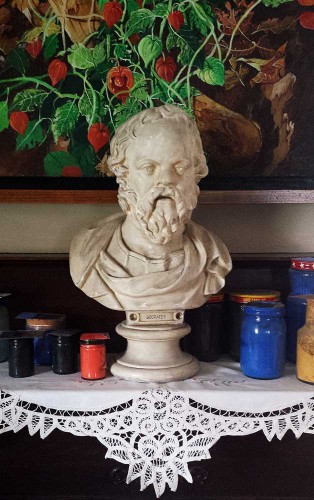 Teaching is not the simple dissemination of answers. We work through these big questions together. The studio is a dynamic place where thought and material intersect and resonate.
Teaching is not the simple dissemination of answers. We work through these big questions together. The studio is a dynamic place where thought and material intersect and resonate.
How?
Composition, construction, and craft are in play here. Answers come through experience. We fail and we fail often. A moment of experimentation is better than a week of speculation. Risk is inherent to creation, but I encourage students to see each colossal failure as a possible solution to another problem. The forked purpose here is to develop the skill and discipline to arrive at an intentional aim while also being open to possibilities one did not intend.
What?
Our work depends on images and objects that form the lexicon of this visual language. I work to deconstruct and expand a student’s visual vocabulary. Students are growing and I feed them with images, concepts, processes, and perspectives. Art is human, not totally cerebral but also corporeal. We give form to concept. The goal is an authentic response made manifest in material.
Why?
This big question is one of conceptual charge. The work must have a reason for being. I may well begin by asking, “Why…?” Purpose doesn’t always float on the surface. I move between the complementary roles of facilitator and instigator. There is a conversation between object and objective.